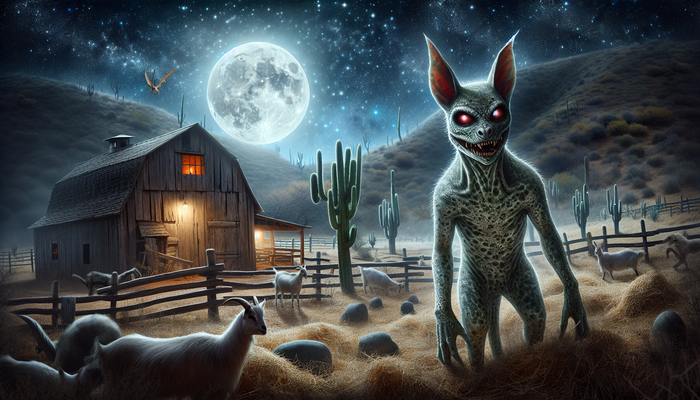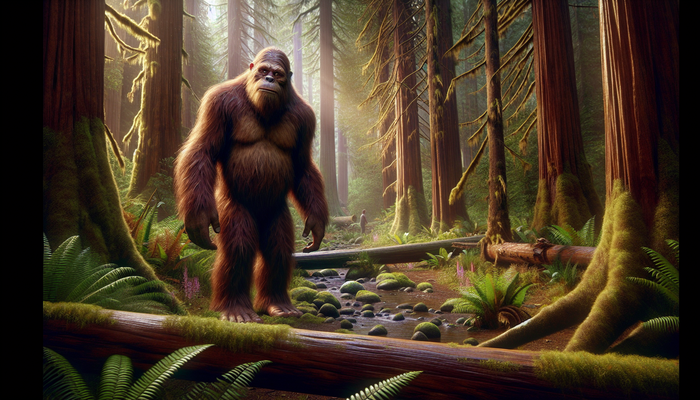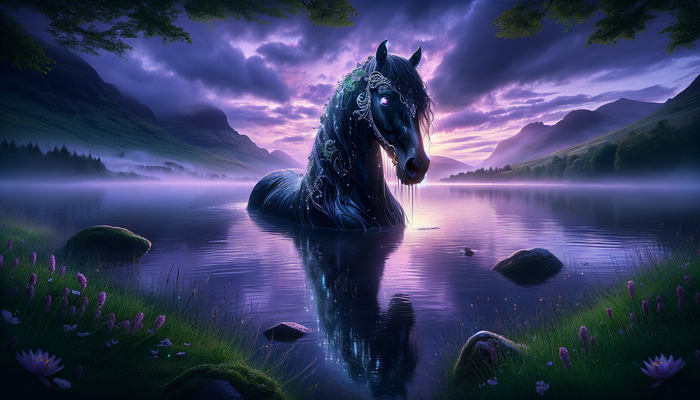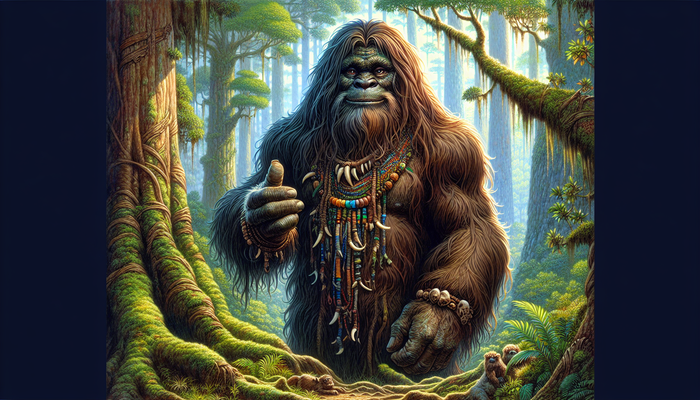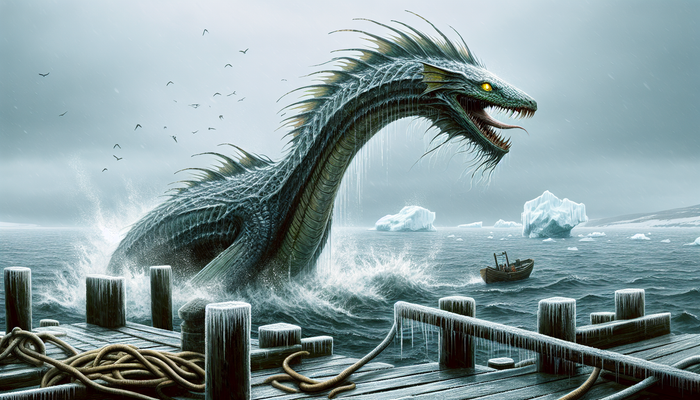The Fascinating World of Utah Cryptids
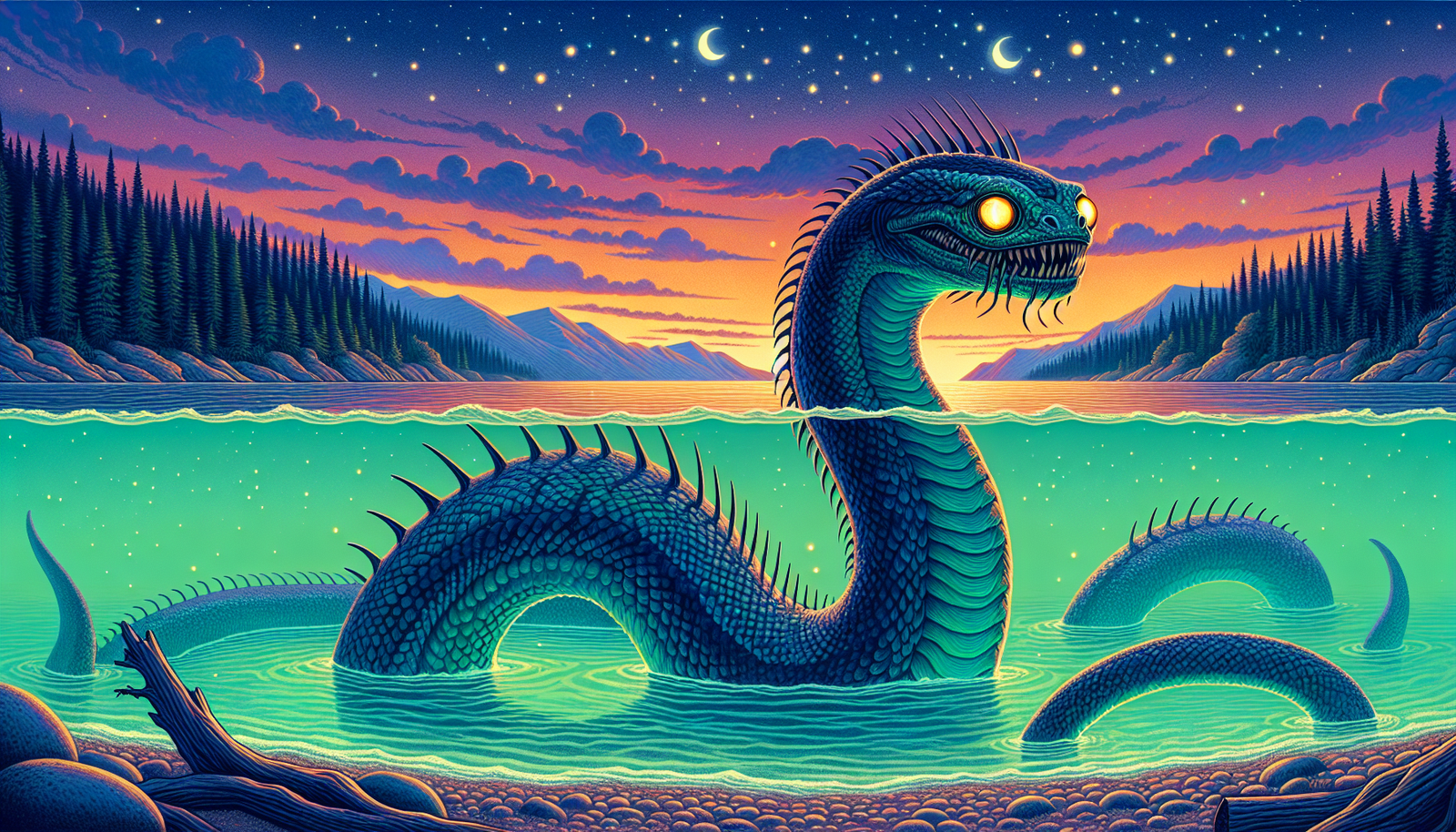
By Jack Sullivan, Cryptozoologist
Nestled amidst the rugged mountains, vast deserts, and glistening lakes of Utah lies a world of mystery and intrigue. For generations, tales of strange beasts and otherworldly creatures have captured the imaginations of locals and visitors alike. These cryptids, as they are known, run the gamut from supersized serpents to shape-shifting witches, prehistoric monsters to extraterrestrial visitors.
As a lifelong researcher of the unexplained, I have always been drawn to the rich tapestry of Utah's cryptid lore. The state's untamed wilderness seems to invite speculation about what might lurk in the shadows, just beyond the reach of our current understanding. Could there be undiscovered species, relics from a primordial past, hiding in the dense forests and deep lakes? Or are these legends a product of our collective imagination, reflecting our primal fascination with the unknown?
In this deep dive, I will take you on a journey through the fascinating world of Utah's cryptids. We'll explore the history behind these enduring legends, examine the evidence (or lack thereof) for their existence, and reflect on what our obsession with these creatures says about our relationship with the natural world. From the iconic Bear Lake Monster to the terrifying skinwalkers of Navajo lore, we'll leave no stone unturned in our quest to unravel the mysteries of Utah's cryptozoological landscape.
So join me, if you dare, on this expedition into the uncharted corners of the Beehive State. Keep an open mind, but don't forget your skeptical lens. For when it comes to the realm of cryptids, the line between myth and reality is often blurred. It's up to us to tread carefully and discern what truths, if any, lie hidden beneath the surface.
The Bear Lake Monster: Utah's Aquatic Enigma
Our journey begins with perhaps the most famous of Utah's cryptids: the Bear Lake Monster. This serpentine beast is said to inhabit the turquoise waters of Bear Lake, a 109-square mile oasis straddling the Utah-Idaho border. According to legend, the monster is a massive creature, measuring anywhere from 50 to 90 feet in length. Some describe it as having a serpentine body with short, stubby legs. Others give it a more chimeric appearance, with a head variously described as resembling a cow, otter, crocodile or walrus.
The origins of the Bear Lake Monster legend are murky, but it seems to have roots in Native American folklore. The indigenous tribes of the region spoke of a large, predatory creature that lurked in the depths of the lake, occasionally snatching unwary swimmers from the shore. But the legend really took off in the late 1860s, when Mormon settlers began reporting sightings of the beast.
The first published account came in 1868, when Joseph C. Rich wrote an article for the Deseret News detailing the monster's appearance and habits. He described it as a "serpent-like creature" that could move with astonishing speed, "faster than a locomotive." This description, along with the article's claim that the monster had been seen by multiple reliable witnesses, sparked a flurry of interest.
More sightings soon followed. In one memorable account from 1871, two men fishing on the lake claimed to have seen the monster surface next to their boat. They described it as having a large, undulating body, "a light cream color," and moving swiftly through the water. Another sighting from 1874 described the creature as having "a head like a greyhound, only twice as large," and a body that was "fully forty feet in length."
The legend of the Bear Lake Monster grew to such proportions that even Brigham Young, the famed leader of the Mormon pioneers, took an interest. He dispatched a large rope to the lake in the hopes of capturing the beast and unraveling the mystery once and for all. Needless to say, the monster proved elusive.
As the 19th century gave way to the 20th, sightings of the Bear Lake Monster became less frequent. Some locals began to suspect that the whole thing had been a hoax, a suspicion seemingly confirmed when Joseph C. Rich admitted in 1894 that his original article had been a "wonderful first-class lie." Case closed, right?
Not quite. Sightings of the monster persisted throughout the 20th century and into the 21st. In 1946, a Boy Scout leader claimed to have seen the creature while out on the lake. In 2002, a Bear Lake business owner named Brian Hirschi reported seeing a large, dark shape in the water that he estimated to be 40-50 feet long. And in 2006, a family visiting the lake captured a video of what appears to be a large, serpentine creature swimming near the surface.
So what are we to make of the Bear Lake Monster? Skeptics argue that the sightings can be explained by misidentifications of known animals, like otters, large fish, or even swimming elk. Some have suggested that the legend was a deliberate fabrication, cooked up to draw tourists to the remote lake.
But others believe that the consistency of the descriptions, across decades and from multiple independent witnesses, suggests that there may be more to the story. Could the Bear Lake Monster be a relict population of an extinct marine reptile, like a plesiosaur, that somehow survived in the lake's depths? Or could it be an undiscovered species of freshwater serpent, unique to the Bear Lake ecosystem?
The truth is, we simply don't know. The Bear Lake Monster remains an enigma, a tantalizing mystery that continues to capture the imaginations of those who visit the lake's shores. Whether it is a flesh-and-blood creature or a figment of our collective imagination, the monster has undeniably left its mark on Utah's folklore.
Perhaps the real significance of the Bear Lake Monster lies not in its physical reality, but in what it represents. In a world that can often seem mundane and predictable, legends like this remind us that there are still mysteries waiting to be uncovered, still blank spaces on the map where the unknown lurks. They ignite a sense of wonder and possibility, inviting us to imagine a world more strange and marvelous than the one we think we know.
The Skinwalkers of Navajo Legend
From the crystalline waters of Bear Lake, we turn our attention now to the sun-baked deserts of southern Utah. Here, amidst the towering red rock formations and endless sagebrush, another cryptid legend has taken root. But unlike the Bear Lake Monster, which is generally seen as a benign, if mysterious, creature, the skinwalkers of Navajo tradition are figures of pure terror.
In Navajo lore, a skinwalker is a type of witch who has attained the highest level of priesthood in the tribe's religion, the 'witchery way.' By performing a certain rite, the witch is able to transform into an animal—usually a wolf, coyote, fox, owl, or crow. But this transformation comes at a terrible price: the witch must first kill a close family member, typically a sibling.
Once the transformation is complete, the skinwalker is said to use its power for evil, casting curses and hexes on its enemies, and even physically attacking them. Some Navajo believe that skinwalkers can read human thoughts, possess people's bodies, and even steal the faces of their victims. They are often described as being nearly impossible to kill, except with a bullet or knife dipped in white ash.
Skinwalker legends have been a part of Navajo culture for centuries, but they gained new prominence in the 1990s with the publication of journalist George Knapp's book Hunt for the Skinwalker. The book chronicled the strange events that allegedly occurred on a ranch in northeastern Utah, which came to be known as the "Skinwalker Ranch."
According to Knapp, the ranch was plagued by a series of inexplicable phenomena, including UFO sightings, cattle mutilations, and encounters with bizarre, wolf-like creatures that seemed impervious to bullets. The ranch's owners, Terry and Gwen Sherman, claimed to have witnessed these creatures on multiple occasions, often in broad daylight.
In one particularly chilling incident, the Shermans' three dogs, which had been trained to hunt lions and bears, were found dead after chasing one of the creatures into a dense thicket. The dogs' bodies were found to be completely drained of blood, with no visible wounds.
The Shermans' story attracted the attention of Las Vegas billionaire Robert Bigelow, who purchased the ranch in 1996 and used it as a base for his paranormal research organization, the National Institute for Discovery Science (NIDS). NIDS investigators spent several years on the ranch, documenting a wide range of strange phenomena. But despite their efforts, they were unable to capture any concrete evidence of the skinwalkers' existence.
Today, the Skinwalker Ranch remains a source of fascination for paranormal enthusiasts and a subject of deep unease for many Navajo. Some tribal members refuse to even speak the word "skinwalker," believing that to do so is to invite the attention of these malevolent beings.
As a researcher, I find the skinwalker legend to be one of the most unsettling in all of cryptozoology. There is something deeply primal about the idea of a human being able to transform into a predatory animal, and the notion that this power could be used for evil is truly frightening.
At the same time, I recognize that the skinwalker legend is deeply rooted in Navajo culture and belief, and that to dismiss it outright as mere superstition would be disrespectful. The Navajo have lived in the harsh desert landscape of the Southwest for centuries, and their traditions are born of a deep understanding of the natural world and the forces that shape it.
Whether or not the skinwalkers are real in a literal sense, they undoubtedly reflect something real about the human psyche and our relationship with the wild. They are a reminder that there are forces in this world that we do not fully understand, and that sometimes, the most terrifying monsters are the ones that live inside us.
Old Ephraim: The Bear That Wasn't
Not all of Utah's legendary beasts are cryptids in the strictest sense. Some, like the infamous grizzly bear known as "Old Ephraim," were all too real. Yet in many ways, Ephraim's story has taken on a mythic quality over the years, blurring the line between fact and folklore.
Old Ephraim was a massive grizzly bear that roamed the mountains of northern Utah in the early 20th century. He was known for his distinctive appearance, with a light-colored coat and a missing toe on his right forepaw. But what really set Ephraim apart was his size. According to some accounts, he stood over 9 feet tall and weighed as much as 1,100 pounds, making him one of the largest grizzlies ever recorded.
For years, Old Ephraim was the scourge of the ranchers and sheepherders who made their living in the rugged backcountry of the Wasatch Range. He had a particular taste for mutton, and would often raid sheep corrals, killing dozens of animals in a single night. Attempts to trap or kill the bear always ended in failure, and Old Ephraim quickly gained a reputation as a wily and elusive adversary.
As Ephraim's legend grew, so did the tall tales surrounding him. Some claimed that he was not a grizzly at all, but a prehistoric short-faced bear that had somehow survived into modern times. Others said that he was a supernatural being, impervious to bullets and able to disappear at will.
But for all the myths and exaggerations, the story of Old Ephraim's demise is a matter of historical record. In August of 1923, a sheepherder named Frank Clark was tending his flock in the mountains near Logan, Utah, when he spotted the bear's distinctive tracks. Clark, who had lost dozens of sheep to Ephraim over the years, set out to hunt the bear down.
After tracking Ephraim for several days, Clark finally caught up with him on a remote hillside. In the ensuing confrontation, Clark managed to shoot the bear several times with his .25-35 rifle, but Ephraim kept coming. It wasn't until Clark's final shot, fired at point-blank range, that the great bear finally fell.
When Clark examined Ephraim's body, he was stunned by its size. The bear's hide alone weighed over 400 pounds, and its skull was nearly 18 inches long. In the years that followed, Old Ephraim's legend only grew. His skull was sent to the Smithsonian Institution in Washington, D.C., where it remains on display to this day.
For many Utahns, Old Ephraim represents the untamed wildness of the state's frontier past. He is a symbol of the rugged individualism and self-reliance that characterized the early settlers of the region, who had to carve out a living in an unforgiving landscape.
At the same time, the story of Old Ephraim is a reminder of the complex relationship between humans and the natural world. While the bear was undoubtedly a threat to livestock and human safety, he was also a magnificent creature, a product of the same wild forces that shaped the mountains and valleys of Utah.
Today, Old Ephraim's legacy lives on in the place names and folklore of northern Utah. A campground, a hiking trail, and even a mountain peak bear his name, and his story is still told around campfires and in hunting lodges across the state.
As a cryptid researcher, I find the tale of Old Ephraim to be a fascinating case study in how legends are born and how they evolve over time. While Ephraim himself was not a cryptid, his larger-than-life persona and the tall tales that surrounded him have much in common with the stories of Bigfoot, the Loch Ness Monster, and other legendary beasts.
In the end, perhaps it doesn't matter whether Old Ephraim was truly the biggest grizzly ever to roam the Rockies, or whether he had supernatural powers that made him immune to bullets. What matters is the way his story has captured the imagination of generations of Utahns, and the way it continues to shape our understanding of the wild places that surround us.
The Wasatch Wildman: Utah's Bigfoot Connection
Speaking of legendary beasts, no discussion of Utah cryptids would be complete without mentioning the state's own version of Bigfoot. Known variously as the Wasatch Wildman, the Utah Sasquatch, or simply the "Utah Bigfoot," this elusive creature has been a staple of Utah folklore for decades.
Sightings of large, hairy, humanoid creatures in the mountains of Utah date back to the early 20th century, but they really took off in the 1970s and 80s. During this time, there were dozens of reported sightings of the Wasatch Wildman, particularly in the dense forests of the Uinta Mountains in northeastern Utah.
One of the most famous of these sightings occurred in 1980, when a group of hikers in the Uintas claimed to have encountered a massive, bipedal creature covered in dark hair. The creature, which they estimated to be over 8 feet tall, reportedly let out a deafening roar before disappearing into the trees.
From Bigfoot to UFOs: Hangar 1 Publishing Has You Covered!
Explore Untold Stories: Venture into the world of UFOs, cryptids, Bigfoot, and beyond. Every story is a journey into the extraordinary.
Immersive Book Technology: Experience real videos, sights, and sounds within our books. Its not just reading; its an adventure.



